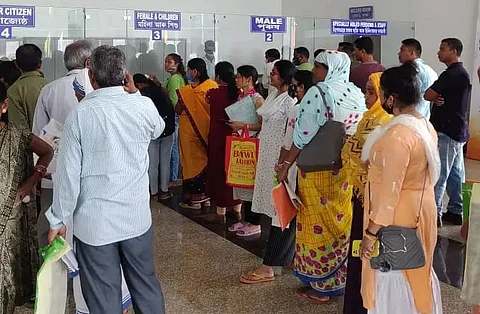
- Home
- Live Blog
- Breaking News
- Top Headlines
- Cities
- NE News
- Sentinel Media
- Sports
- Education
- Jobs

The inauguration of a Cardiothoracic and Neuroscience Centre at Gauhati Medical College and Hospital (GMCH) by Union Home Minister Amit Shah marks a significant milestone in tertiary healthcare in Assam. The event taking place less than a fortnight after the inauguration of a network of cancer hospitals in the state by Prime Minister Narendra Modi demonstrates the faster pace of project execution in the health sector. The spectacular achievement and progress in the sector in just one year of his office has made Chief Minister Himanta Biswa Sarma the cynosure of all eyes not just in Assam and Northeast but also in other regions. Visits by Prime Minister Modi and Union Home Minister Shah to the state within this short span speak volumes about the attention and importance Assam has received from the Central Government. Capitalizing on the opportunities is critical to putting Assam on a faster trajectory of growth and development. The efforts put in by Health and Family Welfare Minister Keshav Mahanta and his team of officials to translate Chief Minister's vision to make Assam the medical hub of south and south-east Asia are also laudable. Transformation in the health sector also marks a paradigm shift in the approach of states in the region in respect of India's Act East Policy and Neighbourhood policy. The Assam Government has sent a positive message to all stakeholders in these two foreign policy initiatives that it does not want to remain a mere recipient of potential investment from the south and southeast Asia under these two policies but to create an ecosystem and shape a narrative that the state is going to play a key role deepening India's bilateral and multilateral engagement. The 300-bed super speciality centre built at a cost of Rs 273 crore and equipped with advanced technologies will help patients from the region to avail themselves of advanced medical care without having to travel out of the region. The COVID-19 pandemic exposed the vulnerabilities of the country's health sector having been caught unprepared to deal with health emergencies. Taking timely measures to overcome the shortcomings was not an easy challenge as it required political will to prioritize health expenditures in the state budget. Quick completion of projects in the health sector in the state has shaped a new narrative about project execution in Assam. It will also go a long way in sending across the message that Assam is no longer gripped by the lahelahe (slowly slowly) syndrome in some sectors like health. All government departments, officials, and employees emulating the work culture behind the transformation in the health sector are essential to creating a positive mindset about work culture in the state. The rapid advancement in affordable tertiary healthcare has unlocked the huge potential of Assam to become a hub of medical tourism in the Asian sub-region. Harnessing such potential will require an innovative marketing strategy. Beautification of the riverside in Guwahati and coming up of iconic destinations like Mahabahu Brahmaputra River Heritage Centre, beautification of Kamakhya temple, a river cruise along the city, ropeway connecting the city with North Guwahati have added to the medical tourism potential of the city apart from regular tourism. A refreshing walk along the river, the magnificent view of the city from the Kamakhya temple or Gandhi Mandap or the mighty Brahmaputra can take away much of the pain of attendants and also some patients the anxiety of a long-duration treatment. Improved air, railway connectivity, several international air routes in the pipeline and rapid growth in the hospitality sector also provide an edge to the capital city. It is heartening to know that the State Government has initiated steps to set up a medical college in all districts within the next five years. The number of medical colleges has increased to eight with four medical colleges inaugurated over the past four years which will play a crucial role in meeting the requirement of doctors in the state to match the growing demand. The robustness in the healthcare system requires strengthening primary and secondary healthcare and overcoming the shortage of human resources- doctors, nurses, and laboratory technicians. The 15th Finance Commission impressed upon the Central and State governments on the importance of strengthening the primary healthcare system as it reduces the need for costlier secondary and tertiary care through the prevention of diseases, and health promotion. Capacity building of urban and local bodies for timely and judicious utilization of Finance Commission grants for the setting up diagnostic infrastructure to primary healthcare facilities, block-level public health units, construction of buildings for sub-centres, Primary Health Centres, Community Health Centre (CHC), health and wellness centres in rural areas and support urban health and wellness centres is a must to improve primary health delivery in the state. Dr Sarma has a vision of each of Assam villages having two doctors over the next 15 to 20 years. Sustaining the current momentum of transformation in the health sector can turn the vision into a reality.